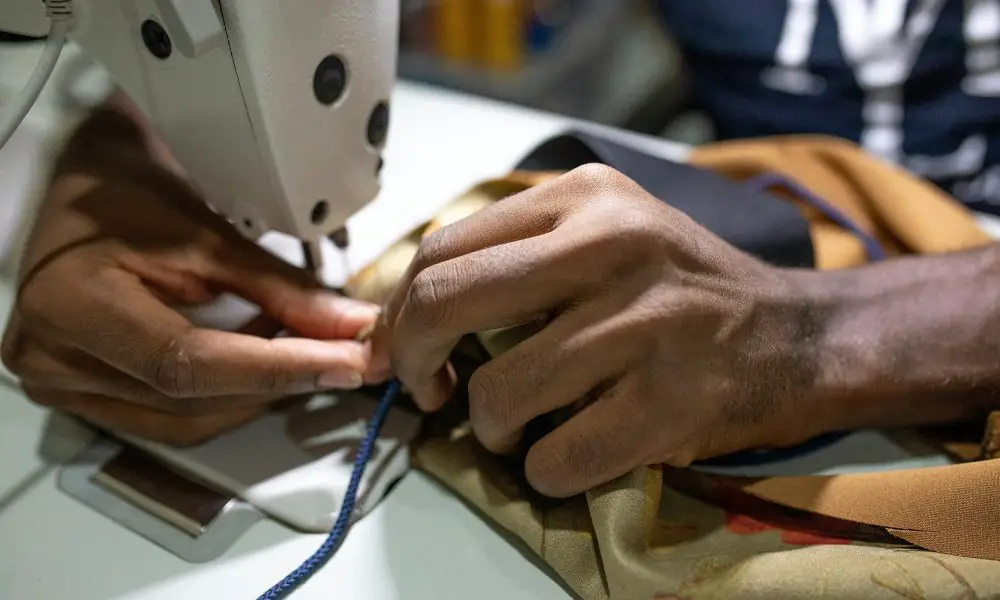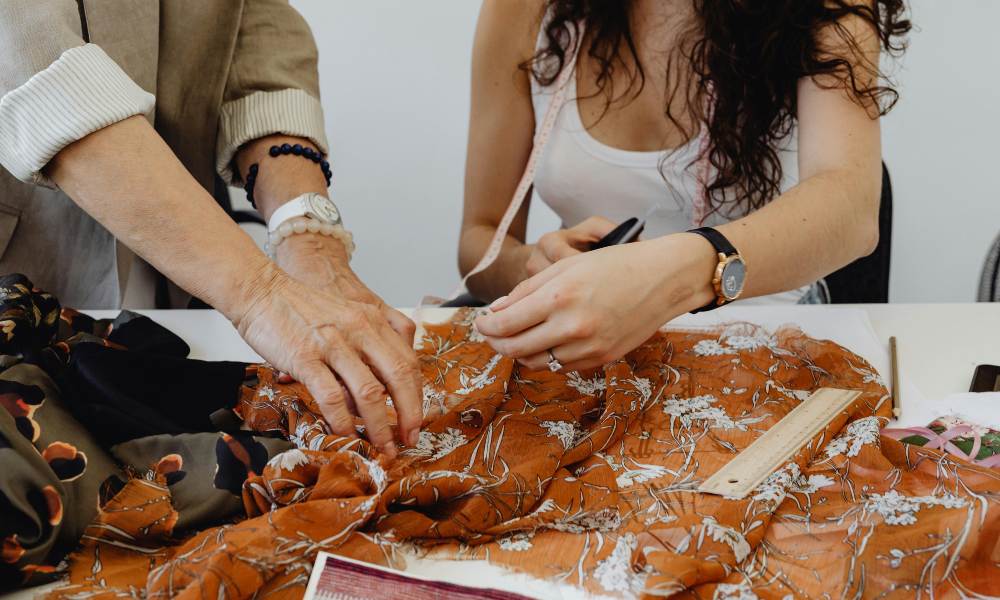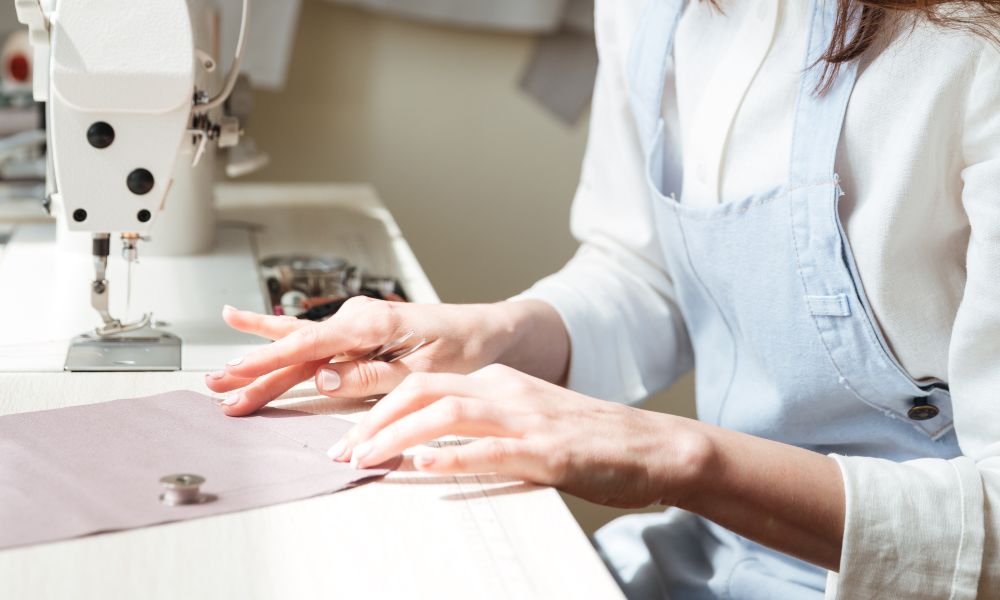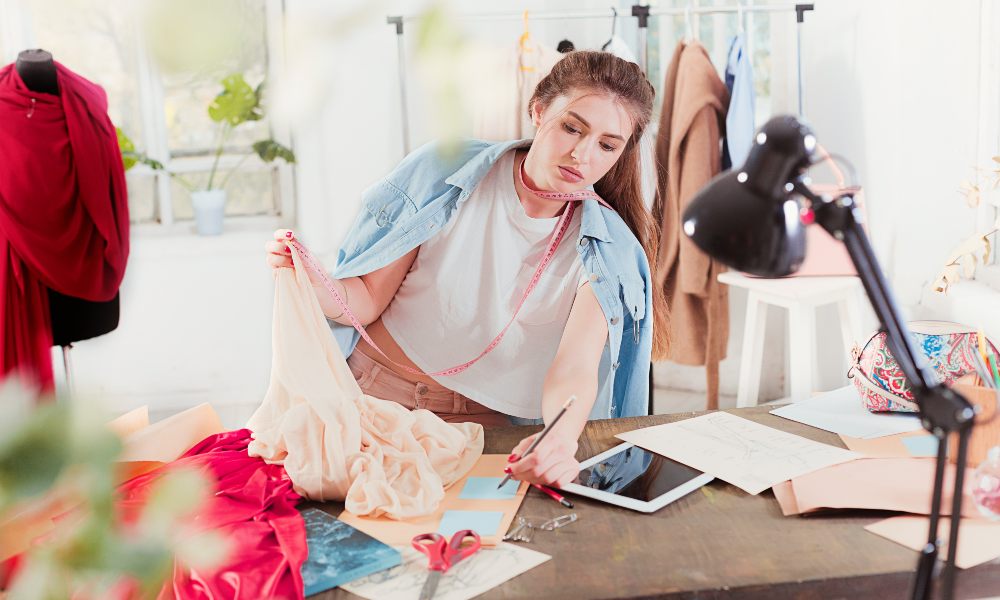Have you ever wanted to create custom clothing from scratch but didn’t know where to start? Learning to sew clothes is a handy and rewarding skill that allows you to make garments perfectly fitted to your body using fun fabrics and prints not found in stores. Beyond being an essential skill for fashion design, sewing is also a wonderful creative outlet and relaxing hobby. With some basic supplies, sewing patterns tailored to your skill level, and detailed sewing instructions, sewing your clothes is easy to learn as a beginner.
Why Learn How to Sew Clothes?
Learning how to sew your clothes can bring about numerous benefits:
- Custom Fit: When you sew your garments, you can tailor the fit to suit your body measurements perfectly. No more squeezing into ill-fitting sizes!
- Unique Fabrics: Sewing allows you to use novelty prints, favorite character fabrics, unique occasion fabrics like sequins or satin, and other designer materials not typically found in ready-to-wear clothing.
- Cost Savings: You can often sew clothes for less than buying retail. Sewing your wardrobe also saves money on tailoring and alterations.
- Creative Outlet: Sewing is a fun, relaxing hobby that exercises creativity. It feels rewarding to design and make clothing from scratch.
- Essential Skill: Knowing how to sew garments and follow sewing patterns is a critical foundation in fashion design. It can lead to a career or side business.
- Altering/Mending: Once you learn to sew, you can easily alter clothing to fit your body better. Sewing skills also let you mend and repair worn clothing.
Next time you’re considering buying another inexpensive t-shirt or pair of jeans from a chain retailer, think about how rewarding it could be to sew your well-fitting clothing in colors and prints you love using sewing patterns!
What You Need to Get Started with Sewing Clothes
To begin your sewing journey, you need just a few basic supplies:
Sewing Machine
A sewing machine is essential for efficient garment sewing and construction of clothing. For beginners, look for a primary mechanical sewing machine with options to select stitches and wind the bobbin easily.
Fabric
Start by practicing sewing on woven fabrics like cotton or linen. Woven fabrics have less stretch and are easier to work with as a sewing beginner than knit fabrics like t-shirts or jerseys. Prewash your fabric in the machine or by hand before cutting to preshrink it.
Sewing Patterns

Sewing patterns provide detailed instructions and pattern pieces needed to sew the garment. Look for “beginner” or “easy” patterns suited to your skill level. Purchase the pattern size closest to your body measurements.
Other Sewing Supplies:
- Sewing machine needles (universal or ballpoint for knits)
- Thread to match your fabric
- Straight pins
- Fabric scissors or shears just for cutting fabric
- Seam ripper for fixing mistakes
- Hand-sewing needles for basting and finishing
- Measuring tape and ruler
- Tailor’s chalk or fabric marker
Step-by-Step Instructions for Sewing Clothes
Once you have your supplies, follow these basic steps to sew a garment as a beginner:
Prepare the Pattern
Select your pattern and size according to your skill level, fabric choice, and body measurements. Carefully cut out each paper pattern piece needed for your garment sewing project. Pin the pattern pieces to the fabric, using weights to hold the paper in place.
Cut Out the Fabric Pieces
Carefully cut out each pattern piece from your fabric using scissors or shears. Take your time to cut precisely along the edges. Transfer any markings from the paper pattern to the fabric, such as darts, pleats, notches, and dots. These markings will help line up the pieces and identify how to sew them together.
Sew the Pieces Together
Pin the fabric pieces together at the seams in preparation for sewing. Baste with long hand stitches to hold the fabric first for tricky or curved seams. Then, sew the seams on your sewing machine using a 5/8″ seam allowance, removing pins as you sew. Finish seams with an overlock stitch or French seams to enclose the raw edges neatly.
Add Closures and Embellishments
Sew on zippers, buttons, or snap closures following the pattern guide. Now is also the time to embroider designs or appliqué embellishments onto your garment for extra flair.
Hem and Finish the Garment
Finish any raw edges using a zigzag stitch, overlock, or serger. Turn up hems as indicated in the pattern, press, and edge stitch into place by machine or hand sewing. Add bar tacks or buttons at points of strain. Press the finished garment with an iron on the appropriate heat setting.
And just like that, you’ve sewn your first garment! With practice, you will perfect your sewing skills and be sewing dresses, cardigan coats, and anything else you can dream up quickly.
FAQs
What are the basic supplies I need to start sewing?
To start sewing clothes, you’ll need a sewing machine, fabric, thread, needles, pins, scissors, a seam ripper, and sewing patterns suitable for your skill level. Start with easy woven fabrics before moving on to trickier knits.
What’s the best beginner sewing machine?
Look for an entry-level mechanical sewing machine that allows you to select stitches and wind the bobbin easily. Computerized options offer more features but are unnecessary for beginners.
How do I take body measurements for sewing?
Measure your shoulders, bust, waist, hips, and inseam to determine the closest pattern size. Refer to the sizing chart on the pattern envelope. Get someone to help measure for the best accuracy.
What fabrics are best for sewing beginners?
Start with medium-weight cotton and other woven fabrics. They’re easier to control and have less stretch than knits like jerseys or t-shirt fabric.
What basic stitches should I know?
As a beginner, focus on mastering the straight stitch, zigzag, and backstitch. Knowing how to set stitch length and tension is also essential.
Conclusion
Learning to sew opens up possibilities for making clothing ideally suited to your taste and body. With just a few basic supplies, pattern instructions tailored for beginners, and step-by-step sewing techniques, anyone can learn how to stitch up custom garments.
What will you sew first now that you know the basics? Perhaps start with an easy pattern for pajama pants or a simple skirt before working on more complex projects like dresses and coats. Explore fabrics, create unique wardrobe pieces, and hone your sewing skills. Sewing your clothes is relaxing, rewarding, and an essential skill. Keep practicing, and you’ll create beautiful customized garments in your unique style. With all the sewing patterns, fabrics, notions, and supplies available today, let your imagination run wild!
***
Main image: pexels




